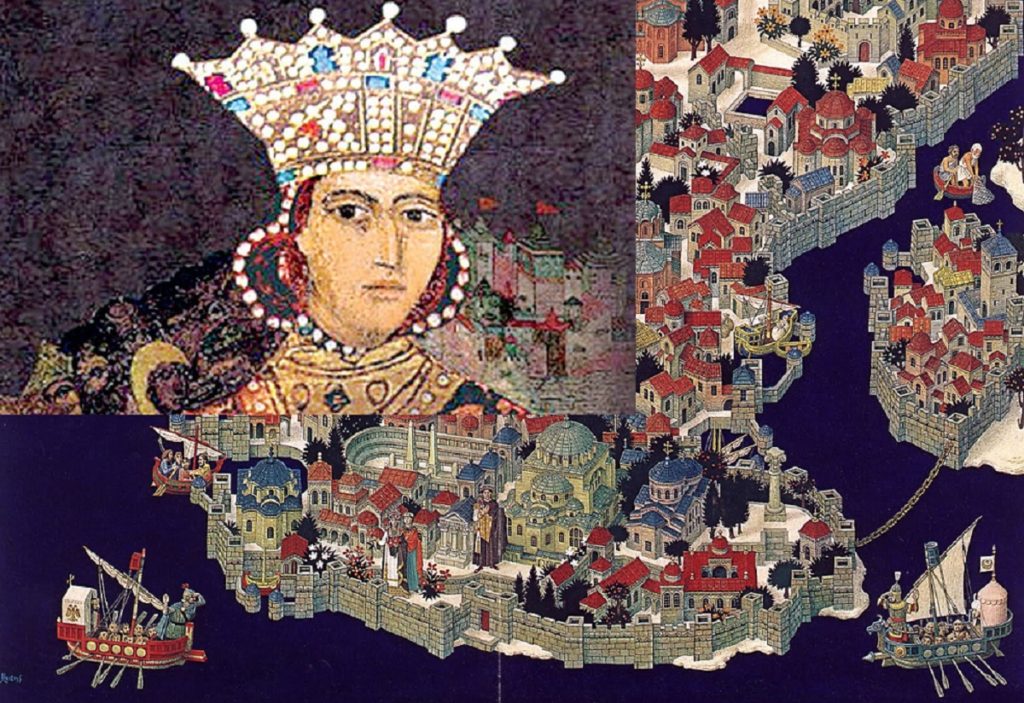This is the story of a Serbian princess who sat on the throne of Constantinople for almost six decades and was the mother of the last two Eastern Roman emperors. The last Byzantine empress Yelena Dragash Paleologos, known in monasticism as Ipomoni, was the great-granddaughter of Saint King Stefan of Dechani. Her father, Serbian nobleman Konstantin Dragash, was born in the marriage of Sevastocrator Dejan and Teodora, daughter of Stefan Decanski. Yelena became the ruler of Romeo by marrying Manoel II Palaeologos, as one of the few empresses of Slavic origin and the only of Serbian origin.
A Serbian princess from the Nemanjich family at the Constantinople court

Princess Jelena was born in 1364, from the first marriage of her father Konstantin Dragash Dejanovich and an unknown noblewoman. Some claim that her mother is the Bulgarian noblewoman Kera Tamara, but that is not certain. Konstantin Dragash Dejanovich is known in Serbian folk poetry as a friend of Marko Kraljevich called Beg Kostadin. Her father’s capital was Velbuzhd or today’s Kyustendil, which in Turkish sounds Kyustendil, which means “Constantine’s Spa”. Constantine Dragash died in the battle of Rovine in 1395, as a vassal of Bayezid I. On the occasion of her father’s death, in October 1395, Yelena and her husband donated 500 golden perpers to the capital’s monastery of St. John the Baptist, for the soul, as noted, ” blessed and glorious lord of Serbia, Mr. Constantine, the father of our mighty and holy empress and ruler “.

Konstantin Dragas Dejanovich, Jelena’s father
Yelena, a direct descendant of the Serbian rulers Stefan Nemanja, Stefan the First-Crowned, kings Urosh, Milutin and Stefan of Dechani, according to the preserved testimonies of contemporaries, was known for her calmness and gentle nature. Among the inhabitants of Constantinople, the Empress enjoyed great respect. A chronicler of three generations of the Palaeologus dynasty and a witness of the last decades of Byzantium, Georgie Sfrances calls her a “holy lady”, and one of the fathers of the Renaissance, Georgian philosopher Gemist Pliton, called her a “soul enclosed by goodness”. Enumerating the virtues that Jelena possessed, the ones that rarely occur, namely love, joy, peace, patience, gentle nature, kindness, faith, meekness and restraint, Patriarch Georgije Sholarije said that she had “almost the only one”. among men “and called her” the holiest among empresses
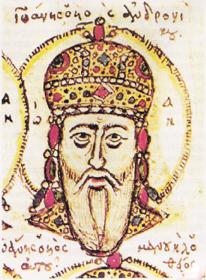
John V Palaiologos
When Emperor John V Palaeologos died in February 1391, his son and co-ruler Manuel was to marry and receive the crown. That is what happened on February 11, 1392. He married the Serbian princess Jelena Dragash Dejanovich in St. Sophia. Thus, she became the “ruler of the Romans”, as one of the few empresses of Slavic and the only Serbian origin. A detailed description of this act by the Russian travel writer Ignatius of Smolensk has been preserved. On the night between December 17 and 18 of the same year, Yelena and Manuel had the first of ten children, and the Kingdom of Rome – the heir to the throne.
Mother of the last Roman emperor
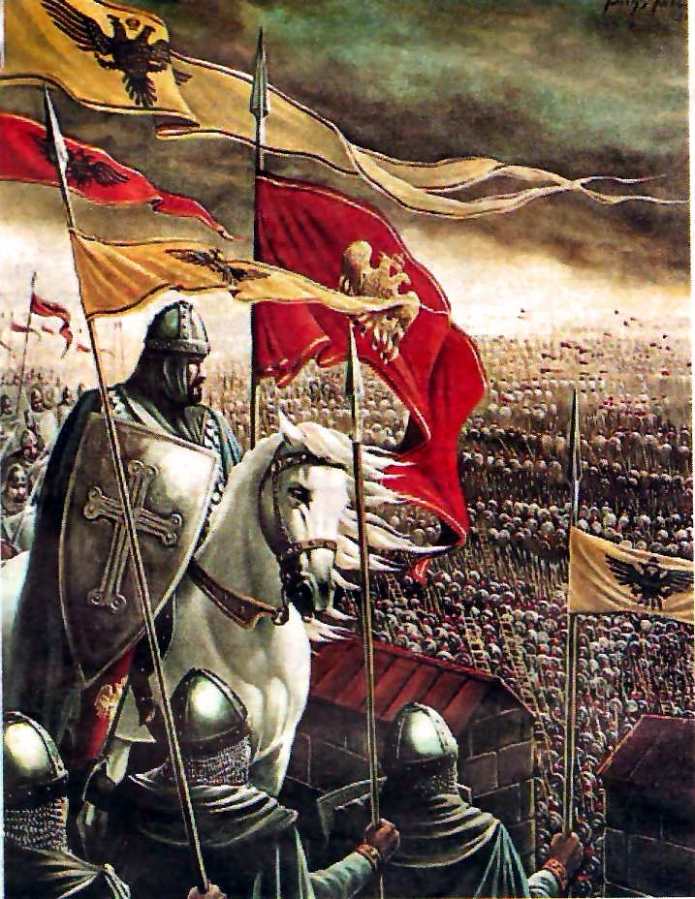
Constantine XI Dragash Palaeologos, the last Byzantine emperor
According to George Sfrances, Manuel and Yelena had ten children. Two daughters and two sons died very young. That left them with six sons, John VIII Palaeologos, the heir to the throne who would become his father’s ruler in 1421, and he was the emperor of Romeo from 1425 to 1448. He married three times and had no children. Then, Theodore, despot, lord of Mystras in the Peloponnese from 1407 to 1443, and later lord of Selimvria. Well, Andronicus, despot, lord of Thessaloniki, later retired to the monastery of Pantocrator as a monk of Acacia. There is also the legendary Constantine XI Dragash Palaeologos, the last Roman emperor, who died heroically in defense of Constantinople. Then Dimitrios, despot in Mesembria, from 1449 in the Peloponnese, died in Adrianople as a monk David. And finally, Tom, who ruled the Morea despotate for some time after the fall of Constantinople under the Turks, in order to spend the last years of his life in Italy.
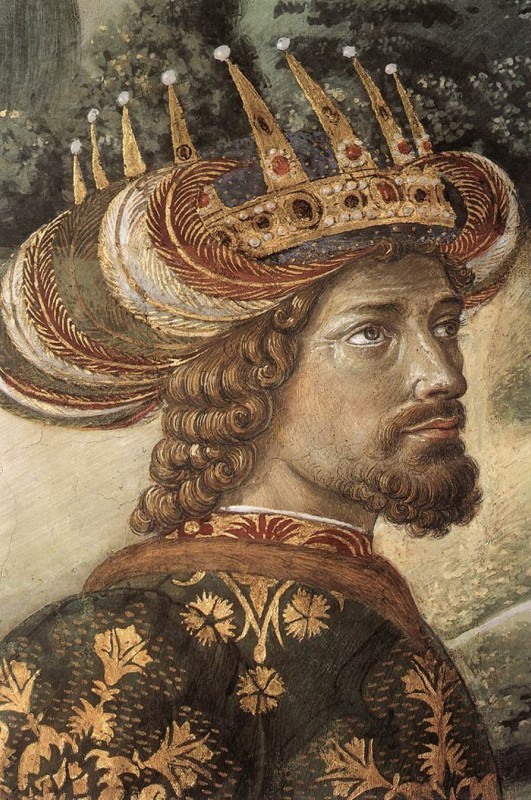
John VIII Palaeologos
Her sons John VIII and Constantine XI were the last Byzantine emperors, and Constantine himself was known under his mother’s maiden name Dragash, which he carried with him.
In the new homeland, the empress, in addition to raising children, had many public duties to which she immediately devoted herself. First of all, she visited hospitals, orphanages and nursing homes that were located near the Constantinople monasteries, donating funds for their work. She also helped the monasteries on Mount Athos and sent them valuable gifts. That is how the golden cross she gave is kept in the monastery of Dionysius to this day. Beneath the crucified Christ, the inscription is engraved in small Greek letters: “Gift of Yelena, ruler of Romeo, Paleologina, wife of Emperor Manuel Paleologos, daughter of Dragash, Prince of Serbia”.
The wise Manoel II Palaeologus
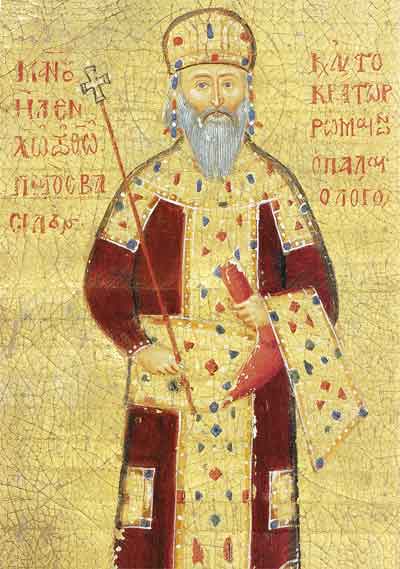
Manuel II Palaeologos
Yelena’s husband, Manuel II Paleologos, was widely known for his education. His enemy Bayazid “Lightning” once said: “Even one who would not know who he is, only on the basis of his attitude could conclude that it would be appropriate for him to be king.”
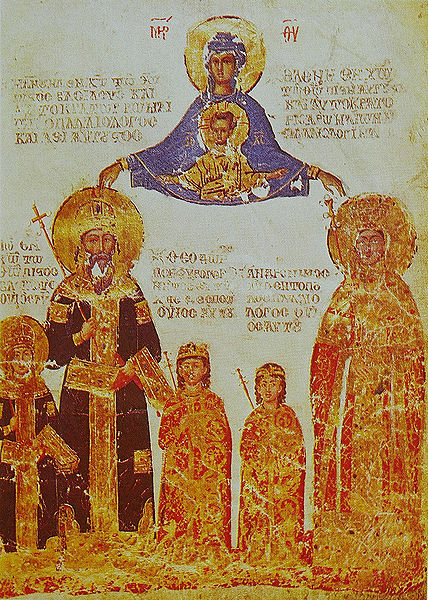
To provide help for the empire, which was dangerously threatened by the Turks, Manuel traveled to the West. Upon his return, Jelena told how he was welcomed in Canterbury and London, as well as at the court of the English king in Eltam, where Henry IV prepared a festive feast for him with the competition of armored men for Christmas. On the occasion of Manuel’s arrival at the court of Henry IV, Oxford professor of canon law, Adam of Usk, noted the following: “How sad that this great Christian ruler was driven by the Saracens from the Far East to these western islands to seek help against them. Oh God! Where are you now, old glory of Rome? ”
Manuel also talked about his stay in Charente with Charles VI and about the time he spent in Paris, where one wing of the Louvre Palace was renovated for him. There he met with eminent French theologians, professors from the Sorbonne, and led scholarly discussions which had as their main topic the differences between Eastern Orthodox and Roman Catholics on the question of the Holy Spirit.
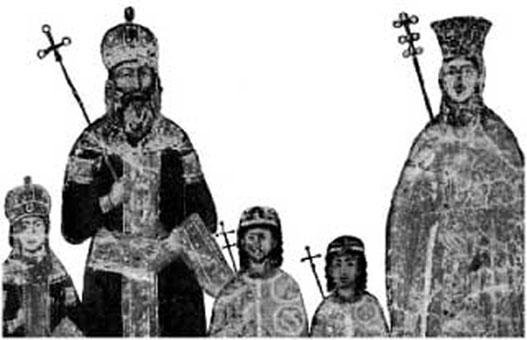
As a memento of his visit, Manuel will later send a richly decorated manuscript of the work of St. Dionysius the Areopagite from the abbey of Saint-Denis from Constantinople as a gift. The manuscript also contains a picture of the royal family, which shows Manuel II, Jelena Dragash, and their sons Jovan, Theodore and Andronic. Next to the figure of Jelena Dragash is the inscription: “Yelena, faithful to Christ God in Augustus and the Autocrator of Romeo Palaeologus”.
Nun Ipomoni after her husband’s death

Yelena Dragash
Manuel II Paleologos died on July 21, 1425, and two days before his death he was ordained a monk named Mathew. He was buried in the family tomb of the Palaeologos, in the royal monastery of Pantocrator, when he gave rich gifts on several occasions.
During Manuel’s life, Yelena was mostly in the shadow of her royal husband. Even during his illness, and especially after his death, the Empress’s presence in public and his influence on resolving important state issues increased significantly. During the 25 years she lived as a widow, and outside the borders of the Empire, she had a great reputation in Constantinople and great power at court.
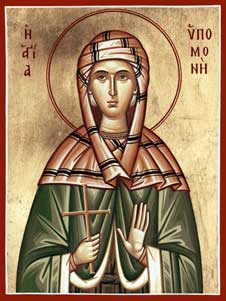
After her husband’s death, Yelena left the palace and secular life. She became a nun and spent that year in the monastery as a nun named Ipomoni, which means Patience. It was immediately clear to everyone who knew her where the word “ipomoni” came from. In Greek, it means “perseverance and patience”, and with Empress Yelena, the virtue of patience has always stood out. She died three years before the definitive fall of Constantinople. The church venerates her as a saint and celebrates her on May 29. Saint Ipomoni chose solitude, but during the 25 years she lived as a widow and outside the borders of the Empire, she inspired, calmed and encouraged the spirit in her children.
And when she decided to withdraw from secular life in order to dedicate herself to God, the Empress-Mother continued to play a significant role in all political events by force of circumstances.
She provided spiritual refuge to all
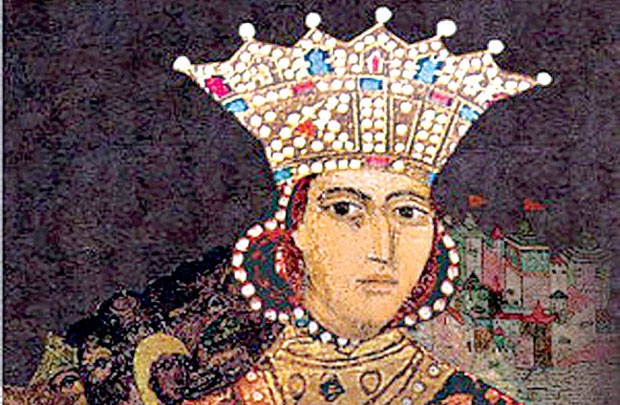
Holy Mother Ipomoni, which means “patience” in Greek, not only helped her family spiritually, but she also helped everyone who was near her. This is the saying from that time of Gennady Scholarius, which was written after the fall of Constantinople: “When someone wise visited her, he would be amazed by her wisdom. If an ascetic met her, he would leave after the meeting, very ashamed of the virtue of her humility. When she was visited by sage, he would leave enriched with discernment. If she were in a conversation with someone who is from the law, he would then leave and be filled with pure reasoning. One judge, after talking to her, stated that he would always consult with her in the future, before approaching the application of practical norms. “
Scholarios further wrote: “If someone brave visited her, he would feel defeated, he would be surprised by the patience, wisdom and strength of her character. If a philanthropist came to her, he would gain a stronger sense of mercy. If people who wanted fun and a comfortable life knew her, after talking to her, they would become wiser and begin to repent for their previous life, acknowledging their worthlessness and becoming humble. I met people who were very pious, but after meeting her, they would gain more zeal. Any pain would hurt less, in the face of her pain. And all those, who would be arrogant, full of themselves, arrogant and selfish, would be mostly different, better, even if they were in touch and spiritual encounter with Saint Ipomoni.
She just went out, like a candle

At age 86, she suddenly weakened and fell into bed. She breathed hard and short, spoke with effort, but her appearance revealed serenity. “While I was still in Iberia,” George Sfrances recalled, “23rd March, 1450, the Holy Empress died, remaining unforgettable in her blessed memories. Yelena died in Constantinople.
Therefore, since she suffered a lot in her life, as she survived two emperors (not only her husband, but also the eldest son) as an empress, and buried seven children, the nun Ipomoni passed away easily, extinguishing herself quietly, like a candle when it burns . She was buried with her husband, high above the sea, in the shadow of the golden domes of Pantocrator. In Greece, she was canonized as a saint, her relics are kept in the monastery of St. Patapius, in Loutrakia, in the Peloponnese. Relics are visited by many believers. In Serbia, the country of her ancestors, hardly anyone has heard of her.

